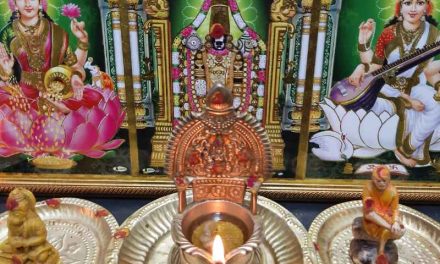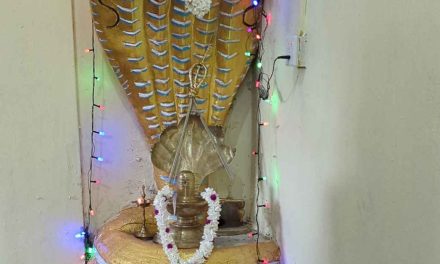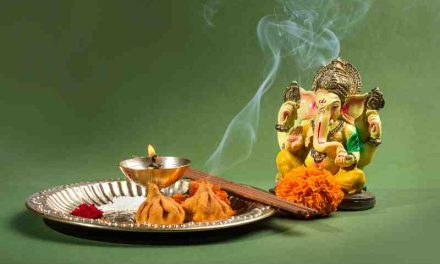The Avyakta Upanishad is one of the minor Upanishads of Hinduism, belonging to the Vaishnava tradition. It is attached to the Samaveda and deals with the topics of cosmology, metaphysics, and spirituality. The word Avyakta means “unmanifest”, “imperceptible”, or “primordial nature”. It refers to both the source of creation and the supreme reality that transcends all forms and attributes. In this blog post, we will explore the teachings of the Avyakta Upanishad and how they relate to the concept of moksha, or liberation from the cycle of birth and death.
The Origin and Nature of the Universe
The Avyakta Upanishad begins with a description of the origin and nature of the universe, which is similar to the Nasadiya Sukta of the Rigveda. It states that before creation, there was nothing here, neither the sky, nor the atmosphere, nor the earth. There was only an appearance of light, having no beginning and no end. This light is identified as Brahman, the absolute reality that is beyond words and thoughts. Brahman is also called Avyakta, as it is unmanifest and imperceptible.
From this light, a sound emerged, which is called Om or Pranava. This sound is the essence of all Vedas and the symbol of Brahman. From this sound, a subtle element called Akasha (space) was produced. From Akasha, Vayu (air) was produced. From Vayu, Agni (fire) was produced. From Agni, Apas (water) was produced. From Apas, Prithvi (earth) was produced. These are the five gross elements that constitute the physical universe.
From these five elements, various beings were created, such as gods, demons, humans, animals, plants, etc. Among these beings, there are two types: those who are bound by ignorance and karma, and those who are free from them. The former are called Jivas (individual souls), and the latter are called Ishvaras (lords). The Jivas are subject to samsara (the cycle of birth and death), while the Ishvaras are not.
The Role of Vishnu and Narasimha
The Avyakta Upanishad also narrates the story of how Vishnu, one of the supreme deities in Hinduism, revealed the teachings of this Upanishad to Prahlada, a devotee of Vishnu who was persecuted by his father Hiranyakashipu, a demon king who hated Vishnu. Vishnu appeared as Narasimha, a man-lion avatar, and killed Hiranyakashipu to protect Prahlada. He then taught Prahlada about Brahman, Avyakta, Om, and moksha.
According to Narasimha, Brahman is the ultimate reality that is beyond all names and forms. It is one without a second, eternal, pure, conscious, blissful, and self-existent. It is also called Avyakta, as it is unmanifest and imperceptible. It is also called Om, as it is the source and essence of all sounds and words. It is also called Atman (self), as it is the innermost core of every being.
Narasimha also explains that moksha is the realization of one’s identity with Brahman or Avyakta or Om or Atman. It is not something that can be attained by external means such as rituals or actions or knowledge or devotion. It can only be attained by inward meditation on one’s own self as Brahman or Avyakta or Om or Atman. This meditation leads to the dissolution of ignorance and egoism that cause bondage and suffering. It also leads to the cessation of all desires and fears that disturb the mind. It also leads to the experience of supreme peace and bliss that surpasses all understanding.
The Synthesis of Samkhya, Yoga, and Vedanta
The Avyakta Upanishad also presents a synthesis of various schools of Hindu philosophy such as Samkhya, Yoga, and Vedanta. It adopts some concepts from Samkhya such as Prakriti (nature), Purusha (spirit), Mahat (cosmic intelligence), Ahamkara (ego), Manas (mind), Buddhi (intellect), Chitta (memory), Indriyas (senses), Tanmatras (subtle elements), etc. However, it differs from Samkhya in that it does not regard Prakriti and Purusha as independent realities but as aspects or manifestations of Brahman or Avyakta.
It also adopts some concepts from Yoga such as Dhyana (meditation), Pranayama (breath control), Asana (posture), Yama (restraint), Niyama (observance), etc. However, it differs from Yoga in that it does not regard these practices as means to attain moksha but as aids to purify the mind and body for the realization of Brahman or Avyakta.
It also adopts some concepts from Vedanta such as Brahman, Atman, Maya (illusion), Avidya (ignorance), Jnana (knowledge), Bhakti (devotion), etc. However, it differs from Vedanta in that it does not regard Brahman as the only reality and the world as an illusion but as different levels of manifestation of Avyakta. It also does not regard Jnana or Bhakti as exclusive paths to moksha but as complementary aspects of the same meditation on Brahman or Avyakta.
Conclusion
The Avyakta Upanishad is a unique text that offers a comprehensive and holistic view of the origin and nature of the universe and the supreme reality. It also offers a practical and universal way to attain moksha, or liberation from the cycle of birth and death. It is a text that deserves to be studied and contemplated by anyone who is interested in the spiritual wisdom of Hinduism.





